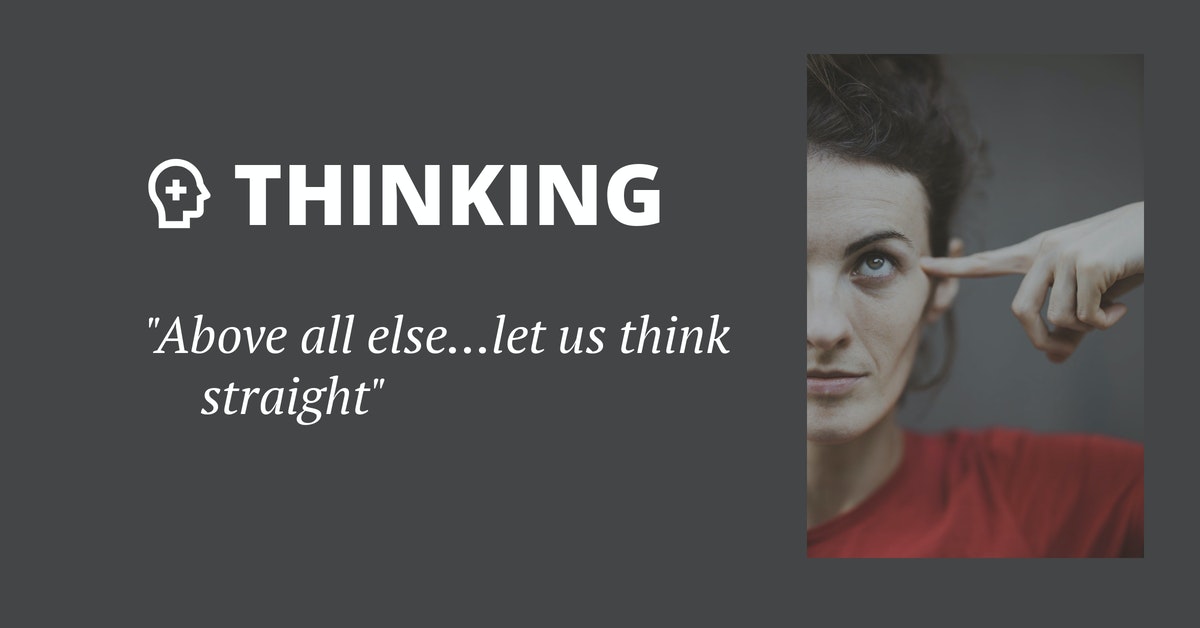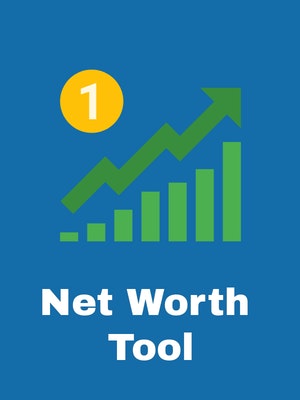
Everyone has biases. Through our lens of experience we formulate opinions, apply judgment, and make decisions. Over time our decisions can become biased by our limited experience and associated emotion. If left unchallenged, this can lead to sloppy thinking, poor financial decisions and failure to achieve life goals.
For most people it is impossible to be unbiased. Our collective experience and wisdom are a huge part of what makes us who we are. We can’t eliminate bias, but we can learn to identify patterns of bias in our thinking and implement a process for challenging our own conclusions.

Pattern Thinking
Pattern thinking, also known as the gamblers fallacy, is the when an individual incorrectly thinks a random event is less or more likely to occur based on previous results. A well-known example of pattern thinking played out on the roulette wheel at the Monte Carlo casino in 1913. After the ball fell on black several times in a row many began betting on red, incorrectly believing red was now a more likely outcome. The ball fell on black 27 times in a row. Millions of dollars were reportedly lost before the ball finally fell on red.
- Another example is a coin toss. If the coin lands on heads three times in a row you might mistakenly believe tails is now a more likely outcome. In reality the probability of that next coin flip being heads or tails is always 50%. In personal finance the tendency to see a pattern where none exists can hurt us in a number of ways.
We may invest in a stock or fund based on recent high returns thinking the stock will continue to go up in value. We may buy a stock or fund based on recent low returns thinking the stock is more likely to go up in value. After 10-20 year’s employment we may think we are not susceptible to downsizing or layoffs. This could lead to a more relaxed work ethic and or overly optimistic outlook on your future cash flows. We may make a large purchase anticipating a similar or larger bonus or raise than the previous year. We may see a period of prolonged economic prosperity as a sign that a recession is coming soon and decide to hoard cash, missing opportunities for investment returns.
A good way to avoid pattern thinking is to view each opportunity or decision independently. Think through decisions and opportunities with a long-term lens. Treat each decision or opportunity as if it the first time you are faced with the decision and not a continuation of other events or decisions. When making investment decisions look at long-term returns and company performance. Bring in as many sources of information to inform your decision. When making a large purchase estimate a best and worst case scenario for future employment and cash flow. Decide how much risk you are willing to take and adjust your investment expectations to the long-term.

The Herd Mentality
The herd mentality is when we refuse to think for ourselves, abandon reason and follow the crowd. The mass opinion of peers is powerful. One study done by Emery University showed the popular opinion of a crowd causes many to change the way they see a problem or decision. Another study showed that disagreeing with a group may actually causes pain receptors to fire in our brains.
The herd mentality is big business for retailers and service providers. Businesses exploit this behavior through advertising campaigns which emphasize the number of loyal customers, offer referral rewards or imply that anyone not taking advantage of an offer is somehow missing out.
Common examples of herd mentality include:
Investing in a stock based on recent performance and a tip from a friend or group. You may unknowingly purchase the stock near the peak of recent performance.
Stretching your budget by purchasing an expensive new vehicle because several others in your neighborhood have the same vehicle.
Invest part or all of your retirement savings with your local religious leader because he/she is well-respected and loved within your congregation.
Joining a multi-level marketing firm and making a substantial upfront investment based on the opinion and short-term results of others. Allowing yourself to get led into purchases or subscriptions you don’t need out of fear of missing out (FOMO).
Sometimes the crowd is right, but spending a little extra time to think long-term before taking action will protect you from painful financial setbacks. Seek out multiple sources of credible information and opinions including from sources or people with whom you disagree.

The Sunk Cost Fallacy
A sunk cost is a cost or time which has already been incurred and cannot be recovered. The sunk cost fallacy refers to the tendency for humans to continue pursuing an activity, strategy or consumption which is not meeting their expectations after they have invested time or money in it.
In personal finance we might feel compelled to continue holding a bad investment, working with a long time financial advisor who is not meeting expectations or even continue in a long-term business relationship which has become toxic over time. The common theme is the perceived time and money put into the investment or relationship. Instead of cutting our losses we carry on, stick with the plan and continue moving forward despite overwhelmingly obvious negative trends or red flags. This type of behavior can be motivated by ignorance, the need to prove something to ourselves or to avoid being viewed as a failure to others.
A very basic example of the sunk cost fallacy in investing is the following:
An individual purchases an investment for $100 dollars. Several months later the value of the investment drops to $10 dollars. Instead of selling the investment and purchasing a different investment which is likely to appreciate, the individual continues on with the first investment until it becomes worthless.
The best way to avoid the sunk cost fallacy is to set goals and evaluate progress frequently.
Keep it simple. Establish a set of performance indicators. If your personal finance or investment strategy is not meeting the performance indicators, action must be taken.
Challenge your own assumptions and thinking. If you did not have any emotional connection to a financial decision would you hesitant to make change?
Change the way you think about failure. Shift your thinking and view failure as an opportunity to learn and progress and then keep moving forward. Your critics are only right if you give up.

The Home Bias
Home bias refers to the tendency to choose financial products and services based on familiarity instead of potential for superior results or cost savings. Individuals tend to feel comfortable with what is known. This comfort can cloud our ability to see better results, cost savings and previously unconsidered risks or opportunities.
One example of home bias could be holding too many shares of your employer’s company stock. If your employer goes out of business you lose both your job and your investment.
Another example is the tendency of individuals to invest only in known domestic opportunities even when over half of the world’s investment opportunities are outside their country.
A third example is continuing to pay high prices for products and services when better value and lower cost could be achieved with some time and effort.
- Learn to associate being uncomfortable with personal growth. Educate yourself on the importance of diversification. Invest time learning about alternative ideas and solutions. Develop a habit of challenging your own thoughts and assumptions.

The Overconfidence Bias
The overconfidence bias refers to the tendency for individuals to be more confident in their own abilities than is otherwise reasonable. Overconfidence is the biggest and most common of all the cognitive biases. It also carries with it the biggest consequences if not recognized and corrected early. When coupled with pattern thinking and herd mentality bad things can happen.
In the 1980s a “wild west” attitude among savings and loan associates including reckless investments in speculative real estate and even riskier junk bonds morphed into outright fraud and led to the failure of nearly a third of the 3,234 savings and loan associations in the United States at the time.
Leading up the financial collapse of 2008 we saw an epidemic of overconfidence from lawmakers, home buyers, mortgage brokers, banks, and investors. The warning signs were clear, but were ignored by just about everyone. Stock markets lost billions, housing markets gave out, evictions, foreclosures and unemployment skyrocketed. As late as July 2008, Treasury Secretary Henry Paulson was saying, “Our banking system is a safe and sound one.”
Other examples of disasters attributed to overconfidence could include the Titanic, multiple oil spills, the even the Vietnam War.
Overconfidence by definition makes it difficult to evaluate risk. In personal finance overconfidence bias can lead to reckless spending, taking on unreasonable levels of debt and getting in over our heads with risky and complicated investments. When overconfident we may trade investments too often resulting in excessive fees and hurt our overall returns.
If left unchecked, overconfidence bias can lead to a cycle of taking positive action only when we feel confident and negative action only when we are feeling scared.
Listen to the narrative in your head. Are you constantly telling yourself that a stock will make a comeback or a decision you made will pan out? Adopt of mindset of lifetime learning. You don’t know everything. Learn your triggers. When and where is your overconfidence most likely to manifest itself? Implement a 2-3 day grace period before making major financial decisions. After the initial excitement fades you will be able to better focus and objectively evaluate the risk vs. reward. Ask for direct and honest feedback from those close to you.
Join the Conversation!
Subscribe and receive free Net Worth and Cash Flow tools.
Plus, receive new and exclusive content delivered straight to your inbox! No spam!


